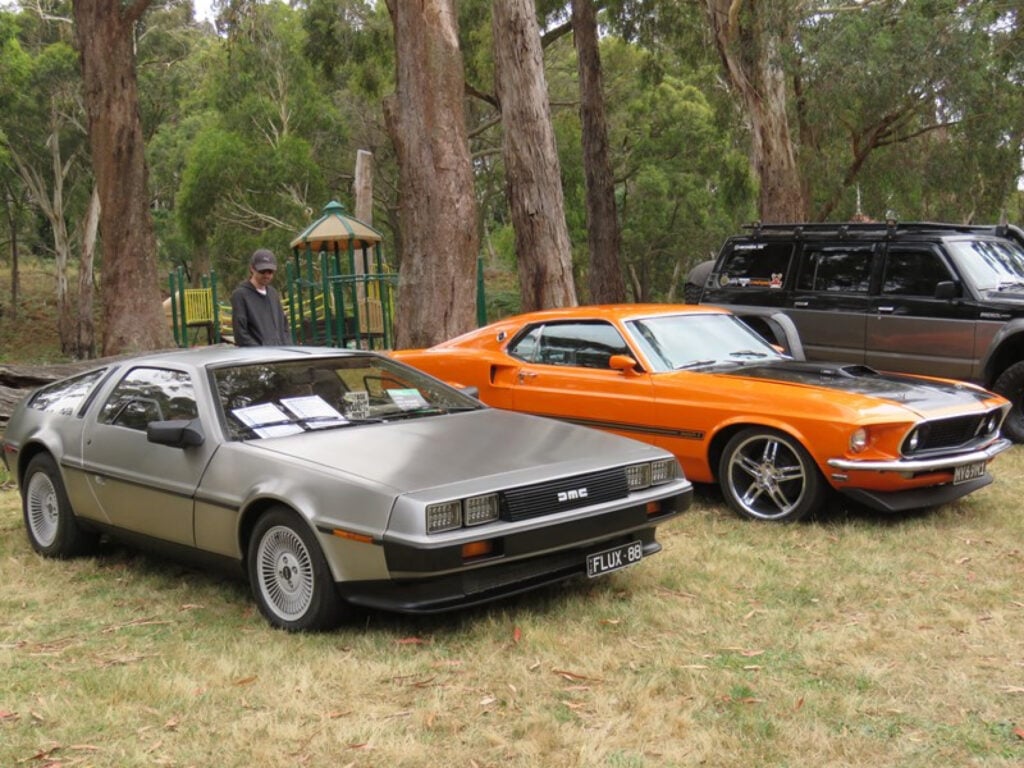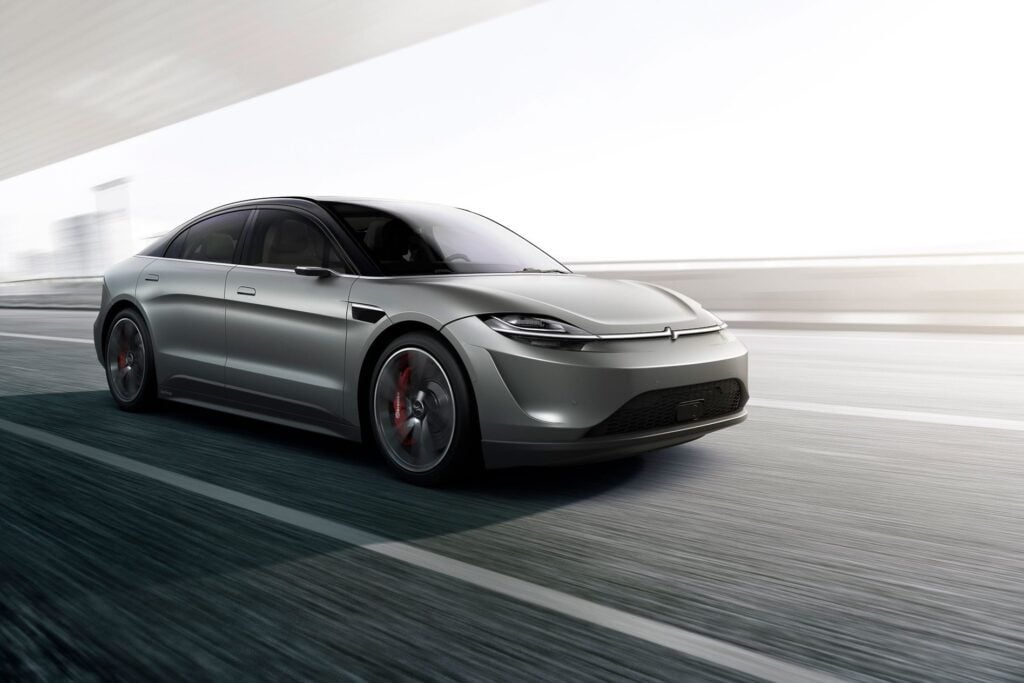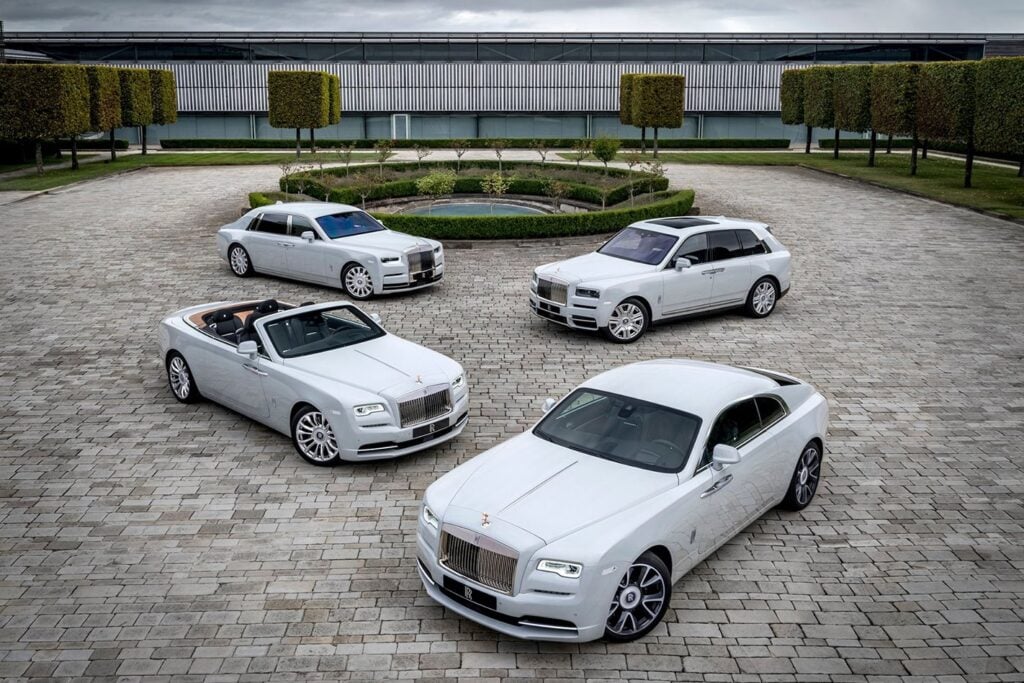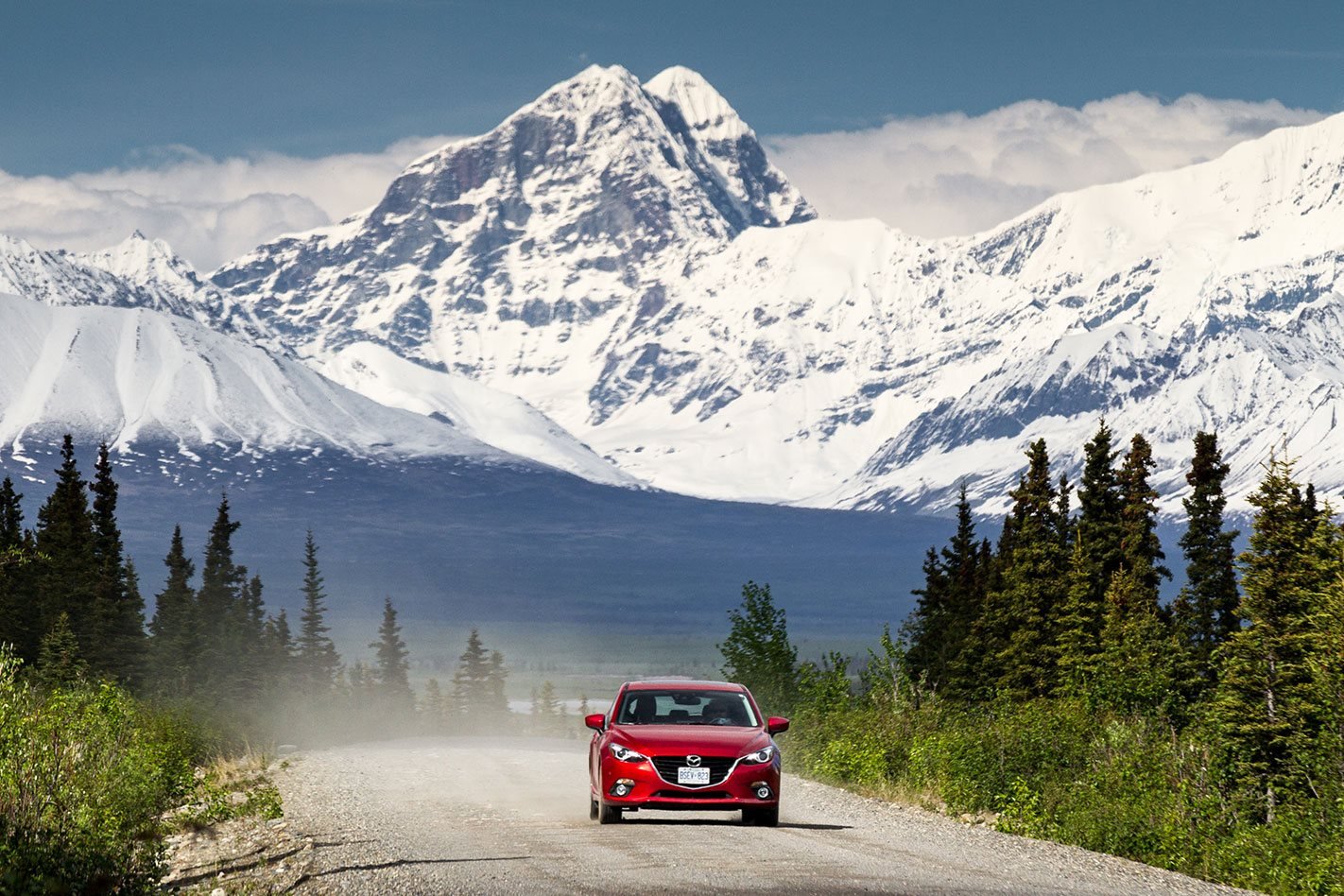
Alaskans are a rugged lot. They live in one of the world’s most spectacular but inhospitable environments, shoot their own meat, including things that want to eat them, and drive pick-ups. Big Bloody Pick-Ups, often ‘enhanced’ with mud tyres, spotlights and gun racks.
They also lay claim to one of the world’s most remote, dangerous and now strangely infamous wilderness roads, the James Dalton Highway, aka the Haul Road, as popularised by the exploits of drivers like George Spears and Carey ‘Big Daddy’ Hall, in the inexplicably popular cable TV series Ice Road Truckers.
Alaska is, of course, one of the world’s last great wildernesses – proudly proclaimed as ‘The Last Frontier’ on the state’s numberplates – and a place many red-blooded adventurers reserve pride of place for on their bucket lists. So when Wheels editor Glenn Butler approached me with the idea of an Alaska road trip, travelling the Haul Road and the lesser known Denali Highway, he had me at “Hey Bully…”
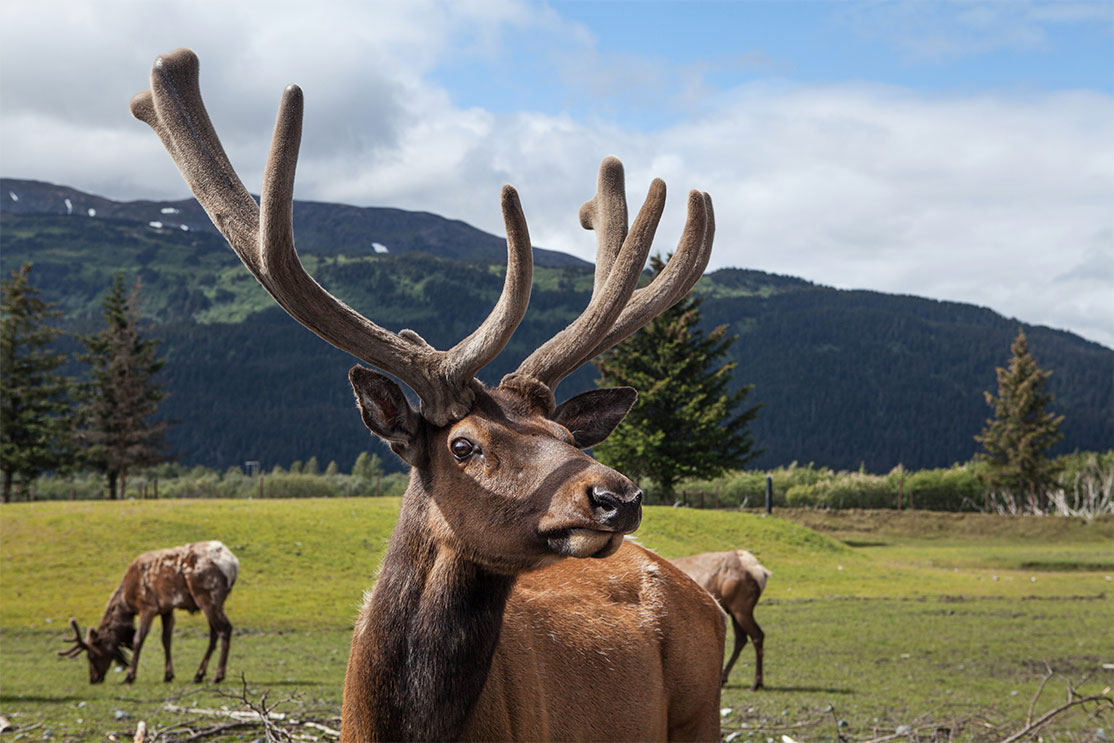
In my boyhood imaginings, the combination of hulking mountains, frozen rivers, wild bears and Daniel Boone types in racoon-skin hats made Alaska seem like the wildest, most remote and dangerous place on the planet. I visualised myself fording surging rivers in an overpowered Dodge Ram, and hammering along the Haul Road, fender-to-fender with wild-eyed truckers called Billy Jim Bob Boy Bubba or such.
“You’ll be doing it in a Mazda 3,” said Butler, turning away quietly.
“A Mazda Tree? Sounds like a tough name for a new pick-up. Great,” I said. Butler just shook his head ruefully and walked away.
Two months later I’m sitting in Alaska’s largest city, Anchorage, with a modest-looking entourage comprising a pair of Mazda 3s and a CX-9 support vehicle. There’s nary a bullbar, electric winch, mud tyre or roof-rack to be found – let alone the surely vital gun rack – and our demure Canadian wrangler, Sandra Lemaitre, doesn’t exactly exude ‘rugged-outdoorsy’ type.
A feisty, bespectacled redhead from Mazda’s Toronto head office, Sandra explains that she will be our guide for the next few days, then promptly gets lost in the hotel car park. Turns out she’s been in Alaska fully one day longer than the rest of us, but she tries to allay our concerns by pointing out that everything we need for the trip is in the back of the laden CX-9.
I clamber in, only to discover that ‘everything’ comprises a book of road maps, a slab of bottled water, some apples, a box of muesli bars and an extra spare wheel for each car.

Surely they will have beefed-up these babies for the rugged roads ahead? My heart sinks after a crawl underneath reveals a bright, shiny, bog-stock undercarriage. The only concession to Alaska’s harsh interior appears to be the addition of higher-profile 16-inch tyres on the sporty hatch, which normally runs low-profile 18s.
I rummage through the CX-9’s load space in search of the rifle bag, assuming we must be packing serious heat for this venture into the notoriously bear-infested wilds. But there’s no gun, not even a Bowie knife, just a couple of bottles of insect repellent and a can of ‘bear spray’.
Bear spray? Sandra explains that the capsicum-based spray is super-effective at warding off cranky bears and can be used from as far afield as eight metres. Turns out she’s had a pathological fear of bears since childhood. Clearly someone in the Toronto office doesn’t like her. Sandra’s fingers curl around the bear spray with a vice grip, and don’t let go.
I do the arithmetic and quickly calculate that, with a charging grizzly galloping at around 50km/h, eight metres ought to be almost enough time to utter “Oh, sh..” before being ripped asunder.
The rest of this potentially ill-fated expedition consists of Sandra’s Aussie PR counterpart, Steve Maciver, a wiry and energetic Scot with a keen sense of humour and a deep knowledge of top-shelf single malt, whose big game hunting experience extends to having once shot “at” a rabbit; Perth-based journalist Neil Dowling, who confesses to never having touched a gun before; and a polite 28-year-old Vancouver-based car snapper, Andrew Holliday, whose lightweight athletic footwear and general lack of outdoor accoutrements suggests he’s as woefully underprepared as the rest of us.
The plan, such as it is, calls for us to head north out of Anchorage for a few hundred miles, jink east on the Denali Highway, then north again to link up with the Haul Road, cross the Arctic Circle and bask under a Midnight Sun at a suitably northerly latitude on June 21, the longest day of the short Arctic summer. Bears willing.

Aside from the jagged line of snow-capped giants looming on the northern horizon, we could be in any of the 48 contiguous states as we head out of Anchorage on the three-lane blacktop of Alaska 3.
At Trapper Creek we check out a classic American Pickers-style log cabin, festooned with decades of dusty antiques and assorted bric a brac, including animal furs, totem poles, antique rifles and the obligatory moose antlers. We somehow resist the urge to purchase anything, although turn-of-the-century snow shoes almost have me.
Soon after, we have our first ‘live’ moose sighting, the horse-sized critter grazing contentedly on the roadside verge, his hulking presence warranting a watchful eye as collisions with moose are commonplace – and you don’t want to hit one in a Mazda 3.
The red hatch I’m piloting hums along sweetly at the 70mph limit, the tacho hovering at a relaxed 2000rpm. It’s easy driving and we should be making good time, but snapper Andrew is already in Alaska’s thrall, and we’re stopping so often as to be overtaken by a convoy of narrow-tyred vintage cars puffing and wheezing their way north.
After dicing with the mobile museum on and off for an hour, we finally muster them at a roadside rest stop on the edge of Denali National Park, where a viewing platform provides distant vistas of North America’s tallest peak, the 6193m Mt McKinley, or Denali as it’s known in native Alaskan.
Here we collar the driver of an immaculate ’63 Chrysler Imperial, who introduces himself as Art Isham and explains that he and the rest of the classic convoy are members of the Antique Automobiles of Alaska club, travelling to Fairbanks for a summer solstice festival.
Art’s friendly, chatty manner meshes perfectly with what the guidebooks tell us about Alaskans, but a little further up the road that stereotype takes a beating courtesy of a curmudgeonly gas station attendant, who threatens to take Maciver’s head off after a mix-up over his credit card-enabled fuel pumps. That’d be funny back home, but here, where a loaded weapon is never far from hand, you take such threats seriously.
Shortly after that scene at Cantwell Springs, which we rename using an alternative vowel, we turn onto the ambitiously named Denali Highway, rated by National Geographic in 2010 as one of the world’s Top 10 Drives.
The mostly gravel ‘highway’ meanders for 135 miles through stunning wilderness, providing epic vistas across arctic tundra, galloping rivers and away to the hulking Talkeetna Mountains, the bare-shouldered peaks still covered in a thick blanket of snow in mid-summer.
Peppered with potholes, rocky lumps and a layer of loose gravel that belts out a staccato beat on the Mazda’s underbelly, the road is rough, but not the car breaker we feared. The little red Mazda handles the conditions surprisingly well, soaking up the irregularities with impressive compliance, thanks in no small part to the 16-inch wheels.
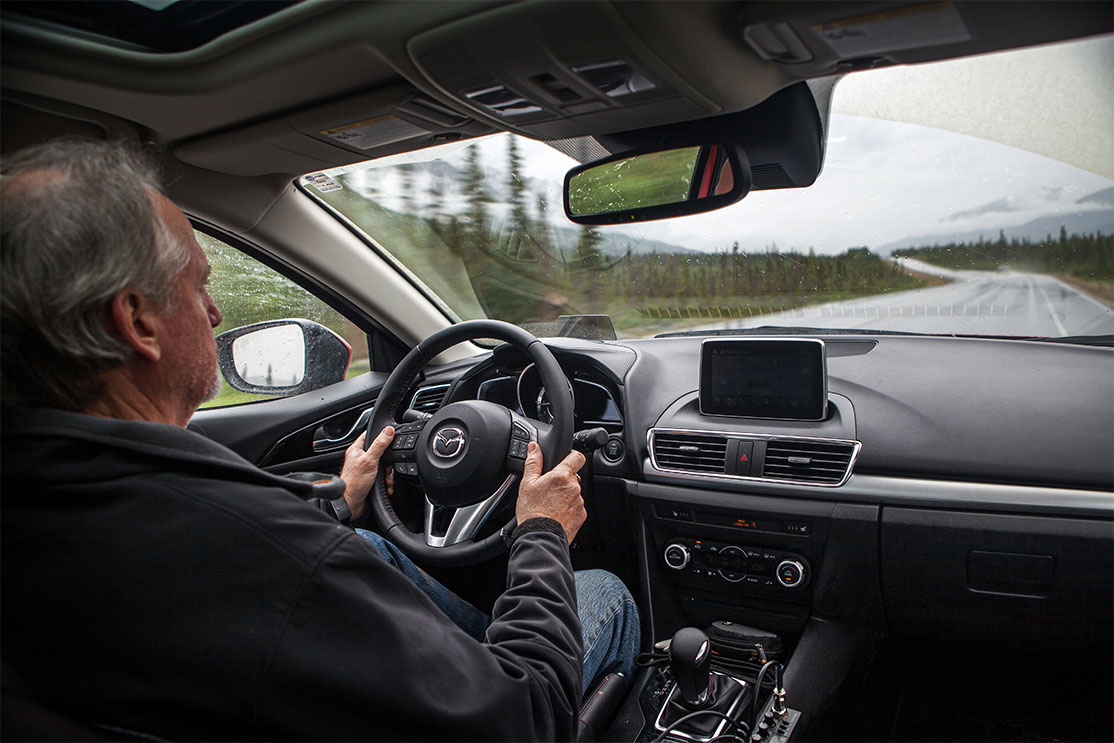
The Denali is jaw-drop beautiful, every crest and bend revealing a stunning new vista. Wildlife abounds, and in the space of a few hours we sight a pair of menacingly quilled porcupines, a moose wallowing in swamp water, and a majestic bald eagle soaring in search of prey.
The scenery has Andrew in overdrive and, despite turning up the wick once back out on the tarmac of the Richardson Highway, it’s past 9pm by the time we make our overnight digs, The Lodge at Black Rapids.
Perched high on a bluff overlooking the surging Delta River, the Lodge offers stunning views across the river flats to the glacially scarred peaks of the Hayes Range. Owner Mike Hopper bangs pots in the kitchen as we enjoy the warmth and a cold beer.
A lean 60-something with salt-and-pepper hair and dark, deep-set eyes, Mike explains that he first found his way to these parts in search of perfect back-country ski runs. “It’s endless for me; I could ski here for years and still not exhaust it,” he enthuses.
Mike recounts various unsuccessful attempts to climb the 4216m Mt Hayes, including the last one, which almost cost him fingers to frostbite. “I’ve tried six times to climb that f–ker,” he growls, gazing out the window, describing it as both a “beautiful peak” and “the most aggressive mountain in all of the interior.”
This far north at this time of the year, the sun never really leaves the sky and, despite a solid 13hr stint at the wheel, we’re still wide awake to witness the strange sight of a beautiful sunset hovering just below the distant ranges at 1.15am.
Not nearly enough hours later I awake to the agitated sounds of the surging river. Peeling back the curtains reveals leaden clouds and dark, rain-slick cliffs, overshadowing the agitated, glacial silt-infused waters.
Rain falls as a constant mist and the dangers of travel in these conditions are soon reinforced out on the highway, where a minivan rests awkwardly in a roadside ditch, wipers flopping back and forth as semis thunder past in a hail of spray.
A couple of hours later we sail through Alaska’s second city, Fairbanks, seemingly the only Japanese compact minnows in a sea of gargantuan pick-up whales.
Further along, a signpost marks the start of the James Dalton Highway, aka the Haul Road, the “Gateway to the Arctic”, warning of “Heavy Industrial Traffic”.
The Haul Road gets its name by dint of being the major supply route for the Prudhoe Bay oil and gas fields and carries a surprising amount of summer traffic, from heavily laden semis to giant gooseneck RVs, groups of adventure bikers and even cyclists.
Despite the wet and slippery conditions, the truckies don’t hang around, using every bit of the 50mph limit and then some, thundering up and over the constantly undulating terrain in a hail of mud and diesel smoke.
Despite its fearsome reputation, the road is surprisingly well maintained, at least by Aussie standards. It’s comfortably wide enough to accommodate two passing semis, albeit with a liberal scattering of potholes and corrugations. But it’s not without risk, with hundreds of off-camber corners, blind crests and pools of standing water that galvanise the attention every time they cause the Mazda 3 to briefly aquaplane. Frequent unexpected mid-corner encounters with hammering 18-wheelers prove especially sphincter-puckering.
The road is shadowed for most of its length by the Alaska pipeline, which appears regularly alongside like a giant silver snake, wending its way through the arctic tundra en route to Prudhoe Bay.
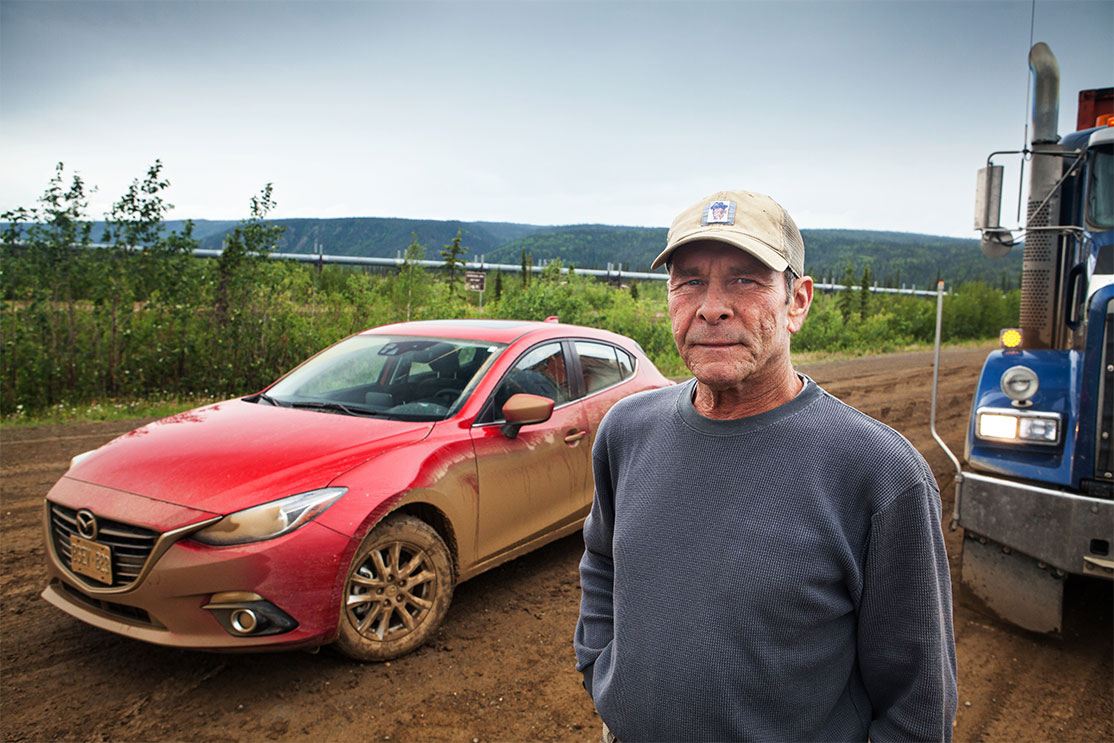
At the mighty Yukon River we slop our way into a muddy, chopped-up car park strewn with heavy trucks. Here I strike up conversation with a trucker who introduces himself as ‘Eljay’ and tells us he heads north from New Mexico each year to haul mining equipment and supplies up and down the Haul Road for $1.00 a mile, nearly three times what he can make elsewhere.
Beyond here lies the final and most difficult 361-mile section of the Haul Road, the construction of which took just five months, despite including some 20 bridges. Say what you will about the Yanks, but they sure can get the big things done.
We eventually cross the Arctic Circle, stopping briefly for the obligatory happy snap, complete with mozzie swarm, before pressing on in the drizzle and gloom.
It’s 9.30pm by the time we slosh into the intriguingly named Coldfoot, an old gold town turned truck stop, situated roughly halfway between Fairbanks and Prudhoe Bay. A corkboard pinned with yellowing snapshots outside the toilets serves as a reminder of the road’s dangers, with an alarming array of overturned RVs, spilled loads and jack-knifed rigs.
On a grimy wall, I spot a quote from a Washington trucker named Butch Rohweder, who eloquently sums up driving the Haul Road: “Sure it gets a little rough at 60 below. Your brakes freeze to the drums, or you can pop a drive shaft like a piece of candy cane if you’re not kind of tender with the gears. Make a wrong move on a hill and suddenly you’re driving an 18-wheel toboggan. That’s how some guys call this the Kamikaze Trail. But it’s the best damn trucking in the world if you know what you’re doing.”
With food in our bellies, we complete the final 20 miles to the ‘Arctic Getaway’, a log cabin venture set in the remains of the old gold mining town of Wiseman, secreted away down a bush track beside the rushing Koyukuk River.

Despite the late hour, the mozzies haven’t bundied off and their assaults send us scurrying inside our warmly lit cabin, just in time to watch the clock strike midnight.
It should be a celebratory moment, having finally made it here, north of the Arctic Circle, on the longest day of the year, but it turns out to be sometwhat anti-climactic. But there are no champagne corks, just a few tired high-fives as thoughts turn to tomorrow’s return trip, retracing our steps in double quick time back to Fairbanks. We sip our ration from the one bottle of red someone has remembered to bring and slap half-heartedly at the mozzies with battery-powered electric swatters.
The smell of frying insects fills the cabin as we pull the curtains to shut out the midnight sun we’ve driven hundreds of miles to see.
THERE’S A BEAR OUT THERE

BEARS are an ever-present threat in most parts of the 49th State, but Alaskans have a similarly pragmatic approach to living with bears as Aussies do with snakes.
“You are in bear country, you have to be aware of it,” says hunter Bernie Hicker.
Hotspot Cafe owner Theresa Moran (left) has a slightly less sanguine view of the critters. “They’re a real pain in the ass,” she declares while flipping burgers.
“That sign out by the toilet, that’s no joke,” she cautions, pointing to a thunderbox out on the edge of the clearing that warns users to be wary of bears. Talk about a laxative.
Asked how she handles the bear problem, Theresa disappears inside and returns moments later proudly displaying a lightweight AR-15 semi-automatic rifle, complete with hot-pink stock and barrel grip. She doesn’t shoot to kill because a couple of rounds over a bear’s head or near their feet are generally enough to send them packing.
The words of James Rollins in his 2003 novel Ice Hunt come to mind: “Always respect Mother Nature. Especially when she weighs 400 pounds and is guarding her baby.”
SMALL-BORE WEAPON
OUR 2460km journey on indifferent roads and in challenging conditions confirmed something we already knew: that the current-generation Mazda 3 is a wonderfully rounded little car.
The Canadian-spec Sport GT hatch we drove closely matches our SP25, its 2.5-litre four-cylinder engine, six-speed auto and nicely-honed dynamics proving a winning combination.
Lively, energetic and beautifully damped, with quick and accurate steering that connects the driver impressively to what’s happening at road level, it proved fluid and effortless to pilot over several long days at the wheel.

The driving position is excellent and the comfortable sculpted front seats proved their worth. A peppering of sportily tactile touches such as the leather-trimmed wheel and gearshift contribute to an attractive and pleasingly functional interior.
The engine served up ample verve for the hilly terrain, while the auto showed its class by avoiding excessive revs and frequent shuffling between ratios. The auto’s Sport mode and paddle shifts were rarely troubled on this trip.
The suspension proved impressively supple and pleasingly absorbent over the roughest patches, thanks in no small part to the addition of higher-profile 16-inch tyres.
Practical, frugal, handsome and affordable, the impressively sorted Japanese hatch provides a level of driving enjoyment that far exceeds its modest price and positioning. Frankly, it’s hard to understand why we didn’t see more of them on the Haul Road.
This article was originally published in Wheels September 2014.

